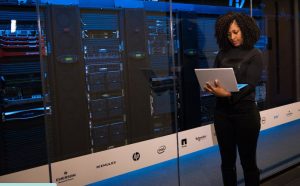The Future of Web Hosting: The Trends Of The Best Web Hosting Services

The future of web hosting is not just about the number of servers and other hardware components. It is also about the way servers are managed, the level of management and automation, and the ability to scale quickly. The future of web hosting will be more service-oriented. The focus will be on providing a complete set of services for all types of customers in various industries. This is the goal of the best web hosting Canada, a more service-oriented web hosting for the people.
Web Hosting Trends
Web hosting has been a key component of a successful website since the beginning of the internet. Websites are no longer static documents that only contain text and images. They are now dynamic, interactive applications with complex databases and many other features that require more resources than ever before.
A trend in web hosting is to use cloud-based services to host websites instead of traditional hosting providers like GoDaddy or DreamHost. Cloud-based services offer scalability, flexibility, and reliability without any upfront costs or long-term contracts.
The future of web hosting is hard to predict because it’s constantly changing with new technologies coming out every day. But one thing is clear – we should expect more changes in the near future as more companies adopt cloud-based services like Amazon Web Services (AWS).
Read also: Buy a Website or Build One?
What’s Next for Web Hosting Technologies?
Web hosting technologies have been evolving over the years. The introduction of cloud hosting and virtualization has enabled organizations to host their websites in a more cost-effective manner. Companies are now looking for new ways to create an even better customer experience. This is where web hosting technologies like CDN and serverless architecture come in.
Web hosting technologies have also evolved from static web pages to dynamic content that can be updated on the fly. This has made it possible for companies to provide a personalized experience for each of their customers.
The future of website hosting is looking bright. As the internet becomes more and more popular, so does the need for a reliable host. As a result, many companies have sprung up to meet this need. These companies are all trying to provide the best hosting service, with their own unique selling point. Some offer unmetered bandwidth, while others offer a 99% uptime guarantee.
This competition is healthy for both the customers and the web hosts themselves, as they all want to provide the best service possible in order to stay afloat in this competitive industry.


 The
The